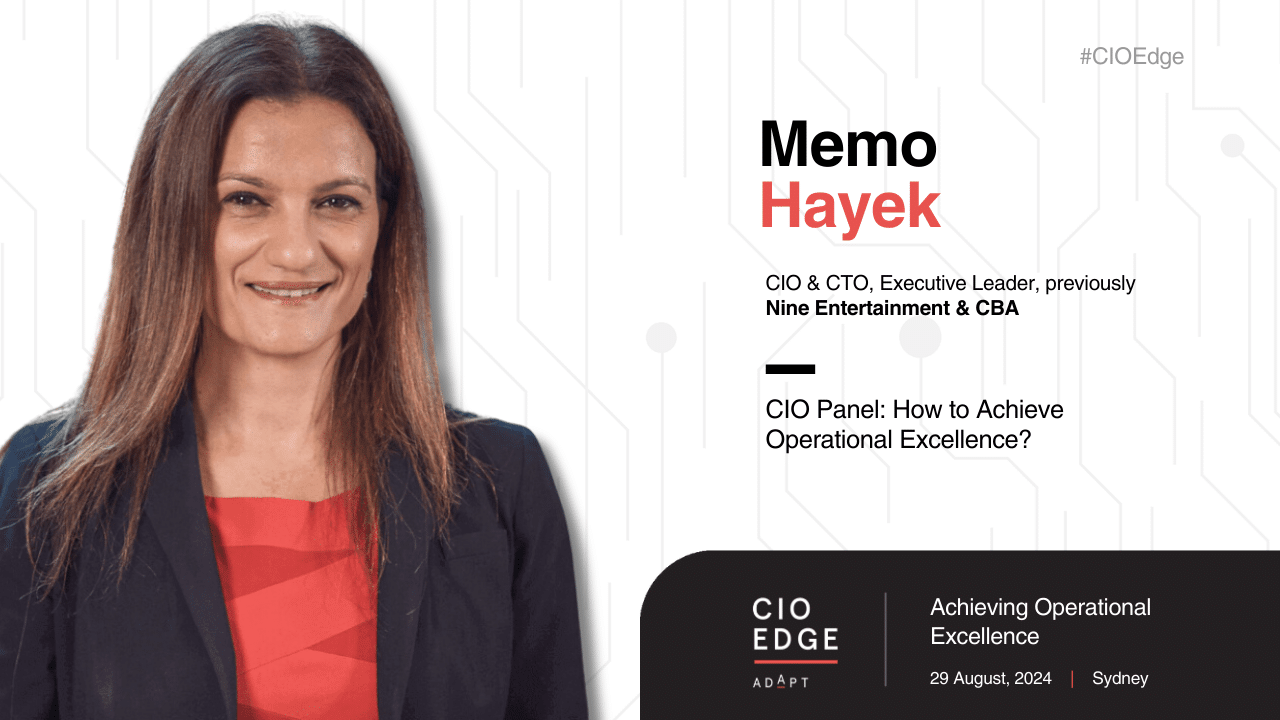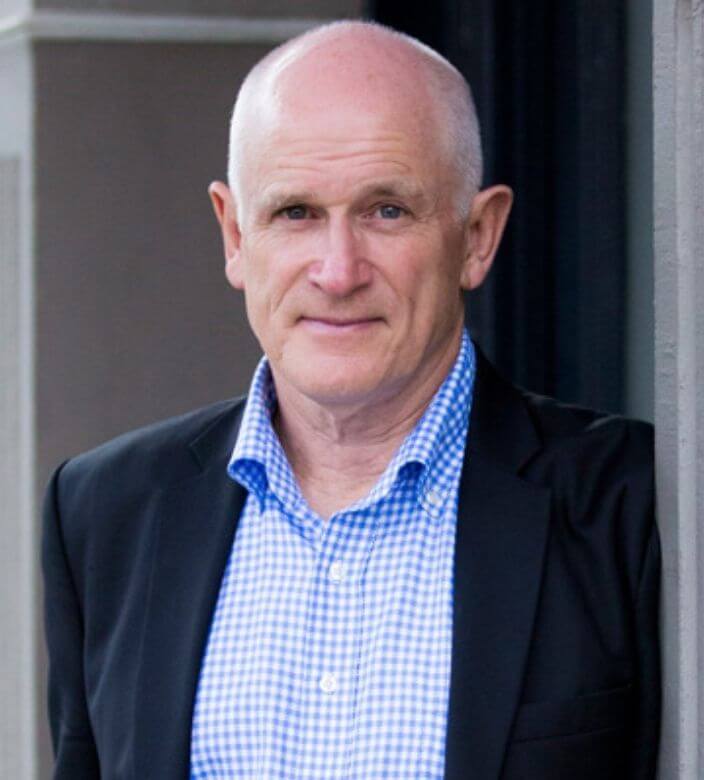CIO & CTO Memo Hayek shares a blueprint for achieving operational excellence
Memo Hayek - CIO & CTO, Executive Leader, previously Nine Entertainment & CBA, recently shared her insights on achieving operational excellence in a conversation with Peter Hind, Principal Research Analyst at ADAPT.Memo Hayek – CIO & CTO, Executive Leader, previously Nine Entertainment & CBA, recently shared her insights on achieving operational excellence in a conversation with Peter Hind, Principal Research Analyst at ADAPT.
She believes that operational excellence goes beyond simply keeping the lights on; it’s the driving force behind business growth and transformation through the strategic use of technology.
Memo joins over 150 CIOs and IT leaders to debate strategies and actionable ways to achieve operating excellence at CIO Edge.
The foundation of trust and growth
The cornerstone of operational excellence, according to Memo, lies in ensuring the availability, reliability, and security of core systems.
These elements establish trust and create a stable platform for innovation and growth. The foundation that gives you “the ticket to play to start off with.”
However, she stresses that true operational excellence goes beyond these basics, encompassing the ability to adapt, transform, and drive the business forward.
The key is to balance these foundational elements with the agility and velocity needed to enable business growth and demonstrate the value of technology.
Metrics that matter
Memo advocates for a balanced approach to measuring progress towards operational excellence, combining intuition and experience with data-driven metrics like the DORA metrics, which assess stability, security, operational performance, and velocity.
The data, she notes, provides valuable validation or highlights areas for adjustment.
Partnerships, not vendors
When discussing modern operating models, Memo champions the idea of treating external providers as partners, integrating them into the team rather than viewing them as separate entities.
This fosters a multidisciplinary environment where everyone works together towards a shared objective.
The key is to create a culture where external providers feel like part of the team, augmenting internal capabilities and working together seamlessly to deliver outcomes.
Transparency and prioritisation
Transparency in IT spending is another key principle for Memo.
She believes that clear visibility into where resources are allocated enables productive conversations and informed prioritisation decisions, ultimately leading to better alignment with business objectives.
By taking the emotion out of decision-making and focusing on risk and value, organisations can have “an adult conversation” about prioritisation.
Risk appetite and business impact
In determining the risk appetite of the board and leadership, Memo focuses on translating technology risks into their potential business impact.
By framing risks in terms of their effect on services, data security, and compliance, IT leaders can facilitate informed decision-making about acceptable levels of risk.
Understand which risks are non-negotiable and where there’s room for flexibility, ensuring alignment between technology decisions and overall business goals.
Key Takeaways
- Foundational Elements: Operational excellence starts with ensuring the availability, reliability, and security of core systems.
- Data-Driven Insights: Utilise metrics like the DORA metrics to measure progress and identify areas for improvement.
- Collaborative Partnerships: Treat external providers as partners, integrating them into the team to foster a multidisciplinary environment.
- Transparency in Spending: Ensure clear visibility into IT spending to enable informed prioritisation decisions.
- Risk-Based Prioritisation: Frame technology risks in terms of their business impact to determine acceptable levels of risk and prioritise accordingly.






























